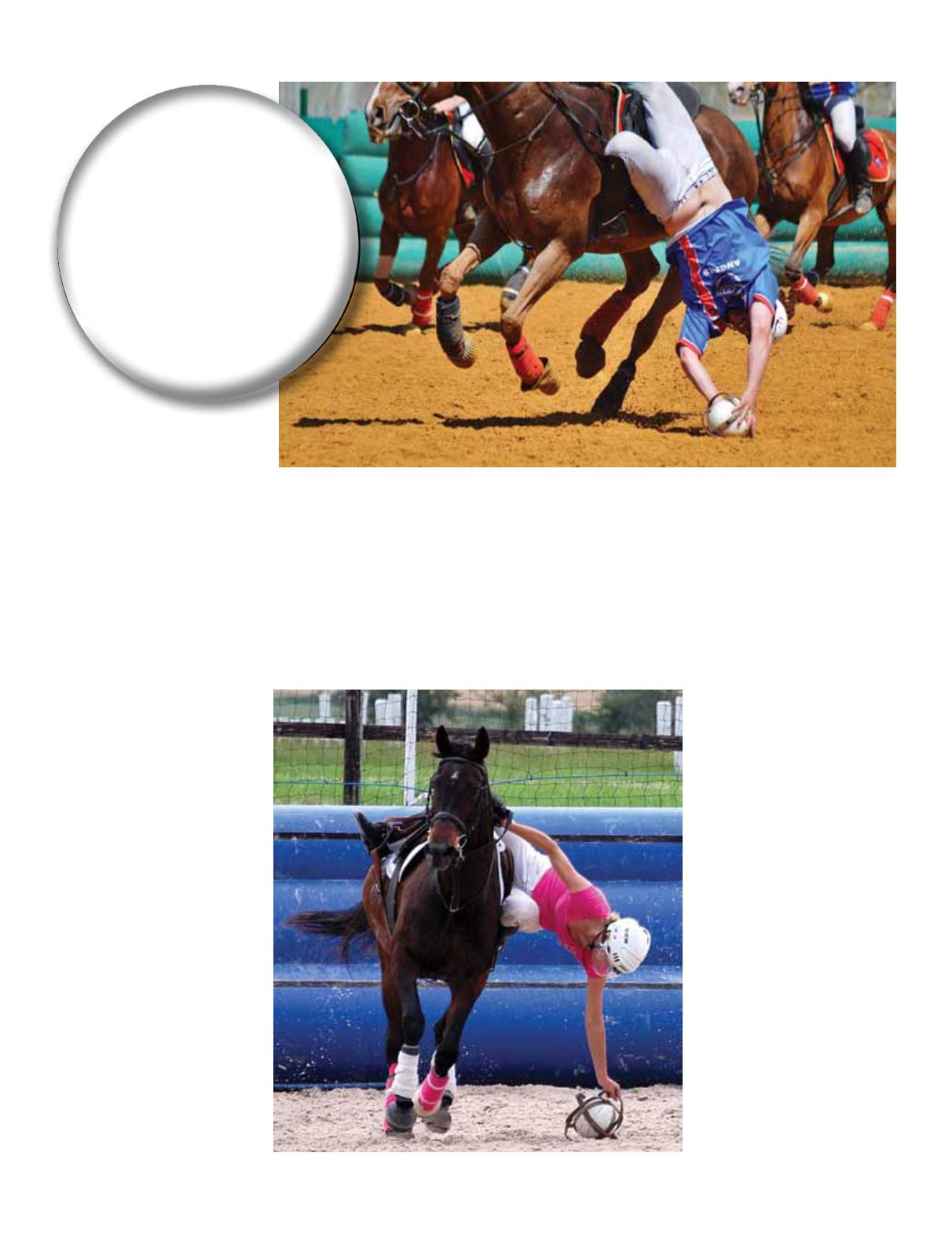
90 SIDELINES MARCH 2014
FOR HORSE PEOPLE • ABOUT HORSE PEOPLE
e
By Darlene Ricker
With eight FEI disciplines to choose from, why would a spectator
opt to watch the horse-ball demonstration at the Alltech FEI World
Equestrian Games 2014 in Normandy? For Sernin Pitois, a French
horse-ball player, the answer is simple: “There is so much action
– the game goes fast and the horses go fast. It’s very exciting!
Horse-ball is like nothing you have ever seen.”
That is especially true for those who don’t reside in Europe or
South America, where horse-ball is widely popular. It is particularly
so in France, which has long been the sport’s top-rated nation. For
the rest of us, what surprises will horse-ball offer?
Just try to imagine a mesh
of polo, rugby and basketball
played at warp speed, with
riders twisting and contorting
every which way (sometimes
out of the saddle or hanging off
the side of the horse) as they
grab for the ball while navigating
a speeding Thoroughbred, all
the while trying not to crash
into one another. While every
precaution is taken to safeguard
the horses and riders, hard
bumps are sometimes inevitable
in this highly aggressive, fast-
paced sport (although head-
on collisions are prohibited).
Competitors and their mounts
are garbed in protective gear,
which is reminiscent of the
sport’s origins as a game
soldiers used to prepare for war
in ancient times.
Horse-ball originated in the
18th century in Argentina,
where it became known as
“pato” (which means duck in
Spanish, a throwback to the
days when the sport was played
with animals instead of a ball). Pato was declared Argentina’s
national game in 1953. After it spread to Europe and other regions
of the world, the International Horse-Ball Federation (FIHB), the
sport’s governing body, was formed. The FIHB has 16 members,
most of which are European nations, along with Argentina, Brazil,
Canada, Cayman Islands, Israel, Pakistan and the United States.
The four current top-ranked European horse-ball nations –
France, Spain, Portugal and Belgium – will participate in a four-
day horse-ball demonstration at the Games in Saint-Lô from
August 27 to 31. The first two days will be exhibition tournaments,
with the semi-finals on the third day and the finals on the last day.
Each day will have narration so that spectators can learn about
the sport and understand the
action on the field.
On a field measuring 60-80
meters long by 20-30 meters
wide, players must grab the ball
from the ground and throw it
through a hoop-shaped vertical
goal, which is 3.5 meters
(almost 11-and-a-half feet)
high. The ball has six leather
handles, any of which can be
grabbed by a player. The game
is played in two halves, each
lasting 10 minutes, separated
by a three-minute break. The
two most important rules are:
a player cannot have the ball in
his possession for more than 10
seconds; and each team must
pass the ball at least three times
among three different players
before scoring a goal (or the
goal will not be counted).
When the ball is dropped or
falls on the ground, anyone
can pick it up, but only if he is
riding in the same direction as
the game is going when the
ball was dropped. The rules
Hang On! A rider leans off his
horse to grab the ball during a
fast-paced game of horse-ball.
Photos by Olivia Kohler JuNiThi
Horse-ball is very popular in Europe and South America.
Horse-
Ball: A
Wild and
Fascinating
Sport


